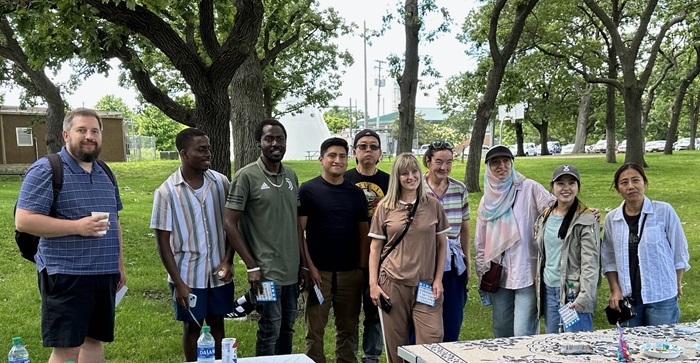Teaching Strategies
Recent Newsletter Articles

Breaking Barriers: The Unexpected Benefits of a Discussion-Based ESL Class
An Advanced ESL discussion class at Metro North in Blaine began as a way to help adult learners strengthen their academic English skills but evolved into something much more meaningful. The experience fostered empathy, challenged stereotypes, and demonstrated the power of conversation in bringing people together. Read More

Translanguaging: Harnessing our Students’ Languages for Classroom Success
What is translanguaging, and why should EL instructors strive to support it in their classrooms? Translaguaging is one way to harness all of our students’ linguistic resources, and it requires intentionality and dedication on our part to give students ownership of their learning. Read More

Cultivating Curiosity: Math Routines in Action
This article shares how one teacher revitalized their math classroom using simple yet powerful routines learned at Summer Institute. The article looks at both the successes and challenges of implementing the low-prep routines of Problem Strings and "I Have, You Need." Read More

Playtime with AI – You’re Invited!
AI (artificial intelligence) playgroups for ABE teachers and staff give you a place to explore AI tools with support from your colleagues. So far, we've played with MagicSchool and Khanmigo. Join us for the next playgroup meeting on November 26! Read More

Creating Systems, Establishing Routines, and Collaborating to Boost Student Achievement
When we consistently incorporate routines and establish systems into our instruction and programming, we lay a strong foundation for student success both inside and outside of the classroom. Read More

Student Magazine to Showcase Writing
Often students don’t view their writing as “real” writing. My idea was that if they could see their writing in a stunning layout with visually appealing pullout quotes, captivating titles, and colorful photos, they would see it in a new way and get excited about the possibilities. Read More

In a Jam Without Jamboard?
One of our favorite teaching tools, Jamboard, is going away on October 1. This leaves many educators struggling to find a suitable replacement. Hear what the Distance Learning Team has to say about Jamboard alternatives! Read More

Election Resources We Can All Agree On!
At times, it may seem like we are in an endless cycle of political campaigns in America. While this may be the new reality, it is more important than ever to ensure that the topics of voting and elections are incorporated into our ABE classroom planning and instruction throughout the entire school year. By doing so, our students will become more informed members of society! Read More

Homophones in Isolation for the Adult Learner
Adult learners often wrestle with homophones as texts and conversations are littered with them. Through nine units of shared homophone lessons, teachers control the pace, and the objective is intentionality because homophones are here (hear), there (their/they’re), and everywhere (wear)! Read More

It’s Autism Acceptance Month
It is Autism Acceptance Month! A time of raising awareness and inclusivity of neurodiversity. Find out more and learn about strategies for working with students on the autism spectrum. Read More